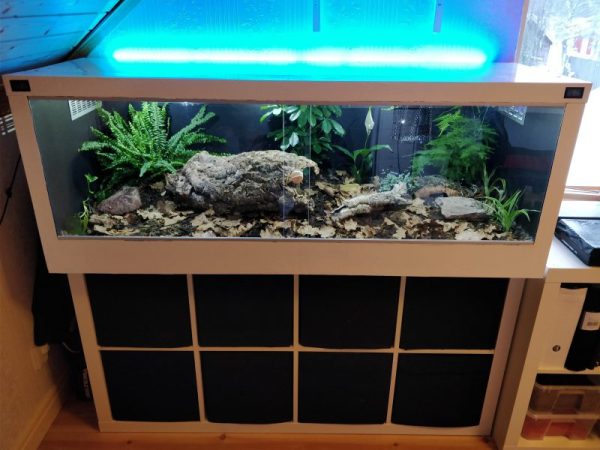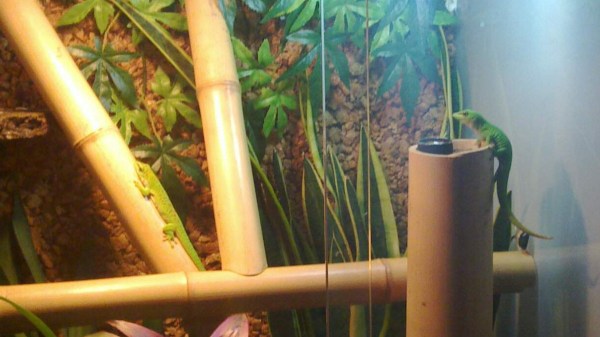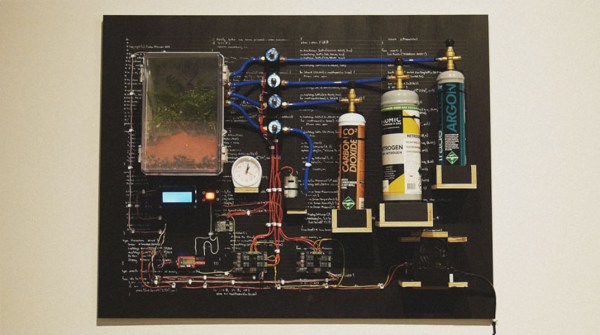For those of us who aren’t blessed with a green thumb and who are perhaps a bit forgetful, plants can be surprisingly difficult to keep alive. In those cases, some kind of automation, such as [Justin Buchanan]’s Oasis smart terrarium, is a good way to keep our plants from suffering too much.
The Oasis has an ultrasonic mister to water the plants from a built-in tank, LED grow lights, fans to control airflow, and a temperature and humidity sensor. It connects to the local WiFi network and can set up recurring watering and lighting schedules based on network time. Most of the terrarium is 3D-printed, with a section of acrylic tubing providing the clear walls. Before installing the electronics, it’s a good idea to waterproof the printed parts with low-viscosity epoxy, particularly since the water tank is located at the top of the terrarium, where a leak would drip directly onto the control electronics.
Continue reading “Preserve Your Plants With An Automated Terrarium”






















